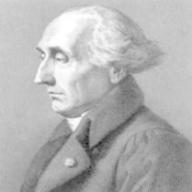capacitor mc question
2011-03-12 9:05 pm
圖片參考:http://imgcld.yimg.com/8/n/HA00414085/o/701103120050313873389090.jpg
Could you please give me an explicit explanation for the question?
回答 (1)
2011-03-12 10:44 pm
✔ 最佳答案
Since one plate of the capacitor carries charge of +900 uC, and the other -100 uC. You could imagine that if an identical plate is inserted mid way in between the two original plates, this doesn't alter the original set up, because there is no change in the electric field intensity. Now, -ve charge of -900 uC would be induced on the side of the inserted plate facing the +900 UC plate, and +ve charge of +100 uC will be induced on the inserted plate on the side facing the -100 uC plateUnder this situation, the set up can be viewed as two identical capacitors (each of capacitance C', say) connected in series, one carries a charge of 900 uC and the other carries a charge of 100 uC.
Hence, using capacitance = charge/voltage
C' = 900/V1 and C' = 100/V2
and V1 + V2 = 4
thus, C' = 900/V1 = 100/(4-V1)
i.e. V1 = 2.6 v
C' = 900/3.6 uF = 250
For two identical capacitors connected in series, the equivalent capacitance is half of that of each capaciotor.
Thus, the capacitance of the capacitor = 250/2 uF = 125 uF
收錄日期: 2021-04-29 17:40:03
原文連結 [永久失效]:
https://hk.answers.yahoo.com/question/index?qid=20110312000051KK00503

